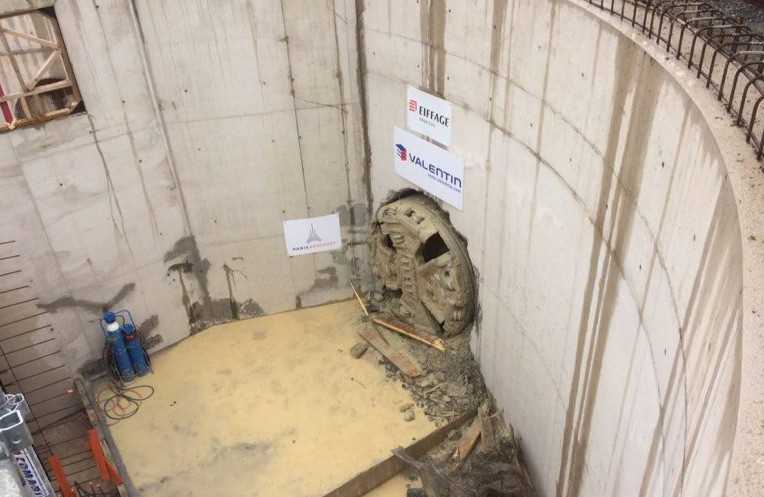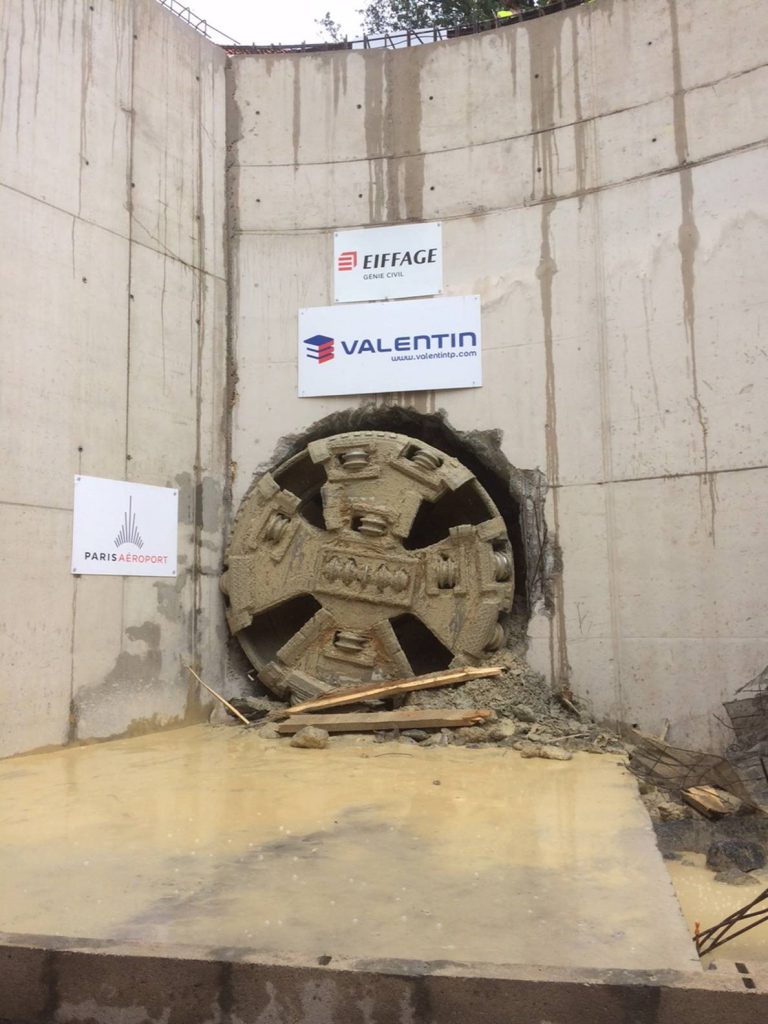October 2017
Extending surface water drainage at Paris Charles de Gaulle Airport
Paris Charles de Gaulle Airport is the largest international airport in France and amongst the busiest in the world handling almost 66 million passengers in 2016.
As part of the ongoing maintenance programme for the airport two new surface water drainage pipelines are required beneath the airport. Due to the complexities of construction and the high degree of security required at the airport as with all airports in the modern age, it was decided to utilise microtunnelling as the preferred option for the installation of the pipelines.
 Joint venture contractor Valentin/Eiffage was appointed to complete the microtunnelling works and elected to use a Herrenknecht AVN microtunnelling machine for the job.
Joint venture contractor Valentin/Eiffage was appointed to complete the microtunnelling works and elected to use a Herrenknecht AVN microtunnelling machine for the job.
For the Charles de Gaulle Airport project the microtunneller was to install two drives of 2,500 mm in diameter as straight bores over lengths of 630 m and 580 m respectively.
To ensure accuracy of the drives the contractor decided to utilise VMT guidance systems for the drives selecting the SLS-Microtunnelling LT system as the best option. However having had no previous experience of the guidance system VMT provided an engineer to take care of the system installation and carry out all required surveys throughout the first of the two drives which took place between February and July 2017. The second drive was recently started in September 2017.
 Whilst the first drive was planned to be a straight line bore, closer investigation of the prevailing conditions and the required location of the drive endpoints showed that the drive would be optimised by the introduction of a shallow curve. So, the VMT engineer on site helped to redesign the bore route with an 18,600 m radius curve which successfully achieved the optimisation of the drive route.
Whilst the first drive was planned to be a straight line bore, closer investigation of the prevailing conditions and the required location of the drive endpoints showed that the drive would be optimised by the introduction of a shallow curve. So, the VMT engineer on site helped to redesign the bore route with an 18,600 m radius curve which successfully achieved the optimisation of the drive route.
This realignment, the high degree of security at the airport and the prevailing conditions made for a challenging first drive in terms of both operations and access to ensure the safest working conditions for the airport staff and construction crew.
Ultimately the first drive was successfully completed in the required timeframe and the preparation for the second drive is at the time of writing well underway.
